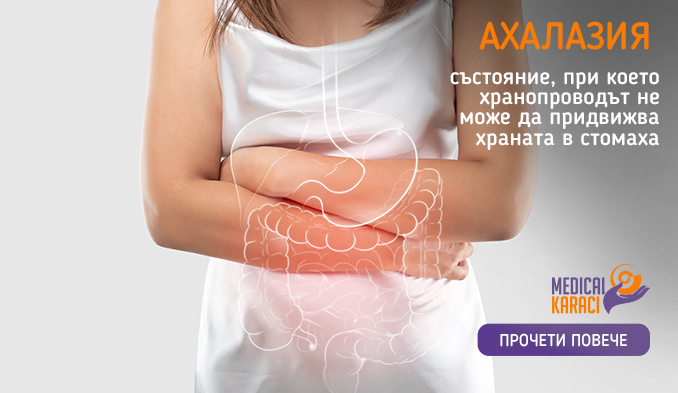The oesophagus is the muscular tube that extends from the neck to the abdomen and connects the throat to the stomach.
Achalasia is a condition in which the esophagus is unable to move food into the stomach. The lower esophageal sphincter, a valve located at the end of the esophagus, remains closed, resulting in food not being swallowed. Other characteristic symptoms of the disease are vomiting of undigested food, chest pain, heartburn and weight loss.
Achalasia is usually diagnosed in adults, but can also occur in children.
For years, people with achalasia have experienced increasing difficulty taking solid food and liquids. Initially, the urge to vomit occurs only after eating, and later spontaneously, in the supine position.
As the condition progresses, achalasia can cause significant weight loss and malnutrition. Patients with achalasia have a small risk of developing oesophageal cancer, especially if it has been present for a long time.
The disease is of unknown etiology. It is thought that the onset may be related to a virus, and recent evidence suggests that the achalasia is caused by nerve cell plexuses of the autonomic nervous system in the muscular layers of the esophageal wall. An extremely rare diagnosis, it may be a congenital disease.
The main symptoms of achalasia include:
- Difficulty swallowing (dysphagia) is explained by patients as sitting - dysphagia behind the sternum. In the beginning, it appears when taking solid food, and later the difficulty is felt even when passing mushy and liquid food and progresses to a phase of impossible ingestion of drinks and water. Regurgitation of undigested bitter food
- Chest pain behind the sternum
- Heartburn
Three tests are most commonly used to diagnose and evaluate a swallowing problem:
- Barium porridge. The patient swallows a barium preparation with contrast and its movement through the esophagus is assessed using an X-ray.
- Endoscopy. A flexible, narrow tube called an endoscope is passed into the esophagus and projects images from inside the esophagus onto a screen.
- Manometry. This test measures the timing and strength of esophageal contractions and relaxation of the lower esophageal sphincter (valve)
In patients with this type of disease, significant weight loss, food and fluid retention in the esophagus, frequent vomiting are observed. Pulmonary infections and pneumonia due to aspiration of food can occur, especially in the elderly.
There are several successful treatments for achalasia:
- Surgery
A minimally invasive surgical technique called laparoscopic esophagomyotomy or Heller myotomy. It minimizes reflux and protects the esophagus from gastroesophageal reflux damage. This surgery usually requires a one day hospital stay and recovery is usually accelerated compared to conventional surgery.
- Balloon dilation
Sometimes achalasia can be treated nonsurgically with balloon dilation. While the patient is under light sedation, the gastroenterologist inserts a specially designed balloon through the lower esophageal sphincter and inflates it. The balloon dilates the opening for food to enter the stomach. This procedure offers a chance of symptom relief for a period of years. However, a risk associated with the procedure is potential perforation of the esophagus.
- Botox injection
Patients who are not suitable for balloon dilation or surgery may benefit from botulinum toxin. Botox is a protein produced by the bacteria that cause botulism. When injected into muscles in very small amounts, Botox can relax spastic muscles. In addition, injections must be repeated frequently to achieve symptom relief.
The prognosis in achalasia is determined individually. A number of factors are taken into account, such as the duration of symptoms, how the disease progresses, the general health of the patient, the response to the treatment regimens administered, and other characteristics.For more information, we at Medical Carragee are at your service.
Call us on the following numbers "Medical Karaj": 0879 977 401 or 0879 977 402.
Also keep an eye on our constantly updated Facebook content.



